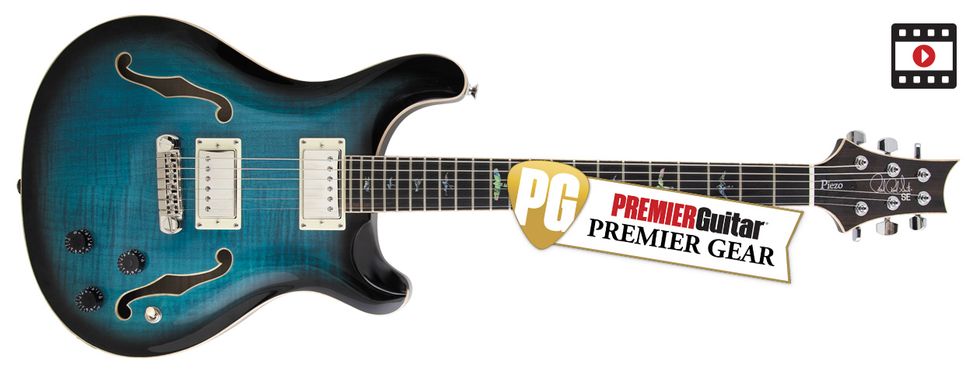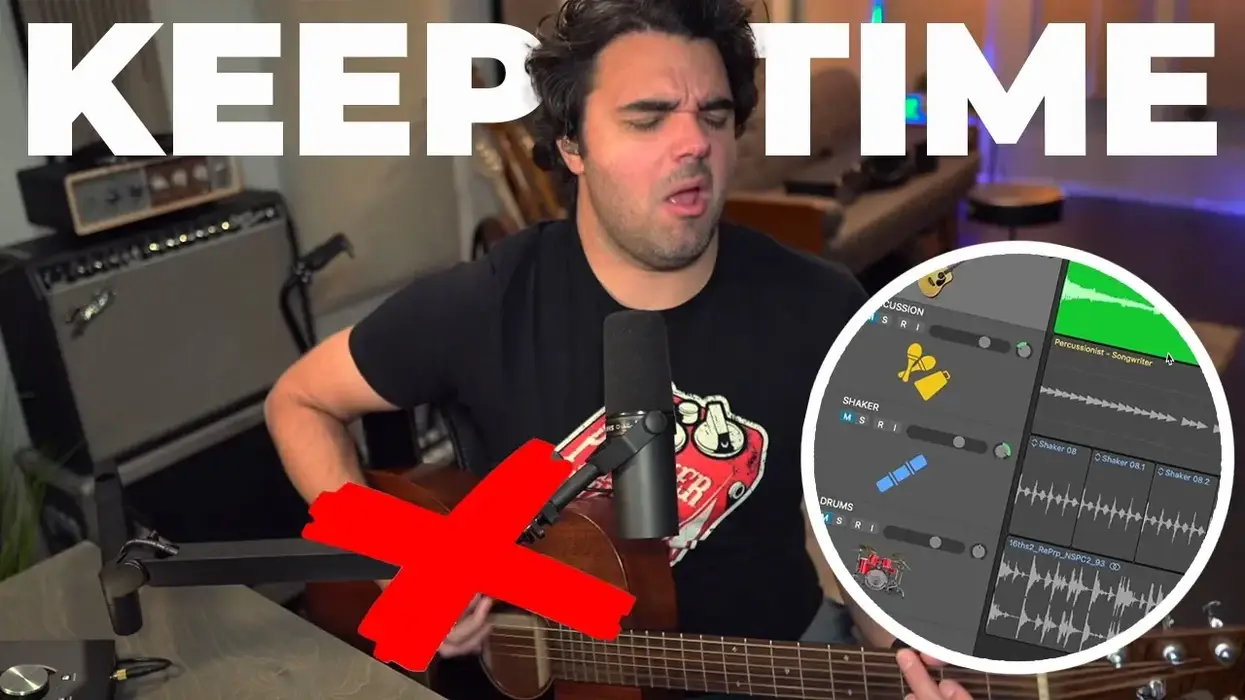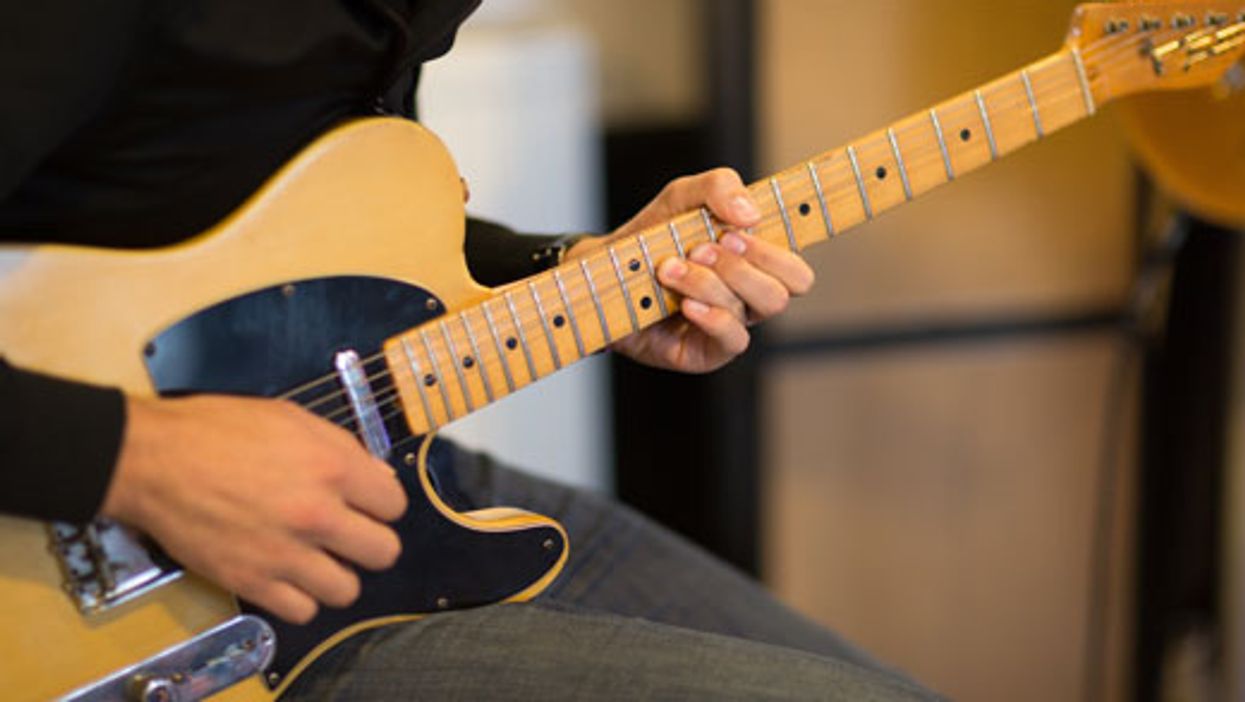RatingsPros:Smooth and responsively playable. Versatile acoustic/electric tones. Cons: Piezo is still a bit quacky. No acoustic tone control. Street: $1,549 PRS SE Hollowbody II Piezo prsguitars.com | Tones: Playability: Build/Design: Value: |
The quality of PRS’s SE guitars makes the Annapolis builder’s accessibly priced line one of the most rock-solid in the business. With the addition of SE Hollowbody II Piezo model, it’s also becoming one of the most versatile.
Dual Identity
The SE Hollowbody II Piezo feels sturdy and smooth and features several elements that are typically seen in higher-end models, like fretboard and headstock binding, bird inlays, and an immaculate flame-maple veneer. (Our review model was outfitted in an eye-catching peacock blue burst.)
Kudos are due to PRS for making the piezo technology discreet but accessible. The control setup includes individual volume knobs for the magnetic and piezo pickups, a master tone control and a 3-way toggle. There are also dual output jacks for mixed piezo/magnetic output and magnetic pickup output only. Depending on your setup, you can flex the acoustic muscle of the SE Hollowbody II Piezo in a few ways. One option is to run two cables—one to an amp and the other to a DI—and then balance the piezo and magnetic output with their respective volume knobs. You can also run a single cable out of the mixed output and blend the sounds.
The humbuckers are “S” versions of the company’s 58/15 pickups. Through my Fender Hot Rod Deluxe, the pickups were full and round with airy highs. I didn’t notice quite as much punch and presence as a typical PAF-style humbucker, but the shared DNA is easy to hear. Paired with a Wampler Paisley Drive and an MXR Dyna Comp the bridge pickup was clear, rich, and biting without any nasally top end.
Combined pickup positions that feel anemic are a pet peeve of mine. Thankfully, the SE Hollowbody II Piezo falls nowhere near that category. With both pickups engaged and the Dyna Comp doing its thing, I could cop convincing Strat-style rhythm tones—and with just a touch of the piezo I could accentuate the highs and mids.
Piezo Paradise
PRS collaborated with L.R. Baggs to create a new piezo bridge system for the SE Hollowbody II Piezo. No piezo system gives you the warmth, body, and air that a condenser mic and a big dreadnought can—even in a hollowbody instrument. But good piezo systems deliver great presence and clarity, and that is certainly the case here. Growing up in the late ’90s, thin DI piezo sounds are burned into my psyche. (I’m looking at you, Dave Matthews.) Since then, manufacturers have done a lot to minimize the quack that plagues piezos, and this system marks a noticeable advance, delivering “acoustic” tones that are rich and not-too bright.
I enjoyed mixing the pickups far more than I expected. Just for kicks, I dialed up a crunchy Marshall-style tone and played with various magnetic/piezo mix levels. As you’ll hear in the clips, the piezo acted almost like an EQ by accentuating certain frequencies that keep the low end from sounding too muddy. On strummy rhythm parts I tried the reverse and blended in just a bit more magnetic clean tone to smooth out any piezo harshness.
The Verdict
Will the SE Hollowbody II Piezo replace a D-18 for all your acoustic needs? Probably not. Will it give you tone-shaping flexibility and ease your load when you travel? Hell yes! At a third of the price of the Core version, this guitar could easily become a go-to workhorse for any player who likes exploring varied tones, minds their expenses, and treasures the ability to travel light.
Watch John Bohlinger test drive the PRS SE Hollowbody II Piezo:

























